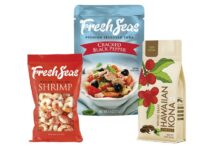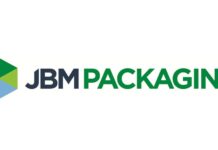Since its inception, the food packaging sector has continuously adapted to meet strict regulatory requirements, evolving consumer preferences, and the complexities of global supply chains.
In response to these challenges, food manufacturers are increasingly turning to digitalization and automation to enhance efficiency, competitiveness, and customer satisfaction.
Here are four tangible benefits that digitalization and automation bring to food packaging businesses:
Streamlined Packaging Processes
Automation has transformed food packaging by improving speed and precision. Standardizing advanced machinery and digital tools leads to significant enhancements in production speed. This is primarily attributed to:
- Reduced Human Error: Automation ensures each packaged item meets predefined specifications, reducing issues like misalignments or labeling errors. This results in fewer recalls and less packaging waste.
- Efficient Handling of Large Volumes: Automated systems seamlessly manage large orders, ensuring consistent packaging quality regardless of volume.
- Comprehensive Process Oversight: Digital integration provides a holistic view of the packaging process, allowing real-time monitoring, bottleneck identification, and workflow optimization.
Leveraging automation not only boosts efficiency but also ensures consistent, high-quality output, positioning organizations for sustainable growth.
Enhanced Output Quality
Automated food packaging minimizes quality discrepancies compared to manual methods. Factory automation guarantees consistent appearance, freshness, and safety through:
- Uniform Packaging: Automation maintains strict quality standards, ensuring consistent label alignment, seal tightness, and ingredient proportions.
- Improved Freshness Preservation: Advanced sealing techniques, driven by automation, optimize freshness preservation, extending shelf life.
- AI-Powered Quality Checks: Integration of artificial intelligence enhances quality assurance by detecting minor anomalies, reducing subpar products reaching consumers.
Higher output quality strengthens brand reputation, fostering consumer trust and loyalty.
Improved Traceability
Increasing consumer demand for transparency in food products has prompted the food packaging industry to adopt innovative digital solutions. Enhanced traceability offers several benefits, including:
- Faster Recall Processes: Technologies like blockchain provide real-time product journey information, facilitating swift identification of affected batches during quality issues.
- Consumer Trust: Transparent traceability empowers consumers to verify product origins, building confidence in brands and encouraging repeat purchases.
- Credibility with Regulatory Authorities: Transparent traceability simplifies compliance checks, demonstrating adherence to food safety regulations.
Advanced digital tools enhance traceability, ensuring brand reputation and regulatory compliance.
Resource Optimization
Digital tools and automation minimize waste and maximize resource utilization, achieving economic and environmental sustainability. For instance, an IoT-based food waste monitoring system reduced waste by over 60% in a ready-meal factory:
- Cost Savings: Automation ensures efficient resource usage, leading to long-term cost savings.
- Reduced Environmental Footprint: Minimizing waste and energy consumption reduces the industry’s carbon footprint.
- Workforce Empowerment: Automation frees workers from repetitive tasks, enabling them to focus on value-driven activities. Digital tools facilitate real-time communication and collaboration.
Embracing automation and digitalization optimizes resources, promoting efficiency, sustainability, and a brighter future for the food packaging industry.
Technological advancements are reshaping the food packaging industry, making it more efficient, sustainable, and responsive to consumer demands. Stakeholders in the food industry should seize the opportunity to invest in these innovations, creating a future where transparency, sustainability, and consistent quality are the norm.



























